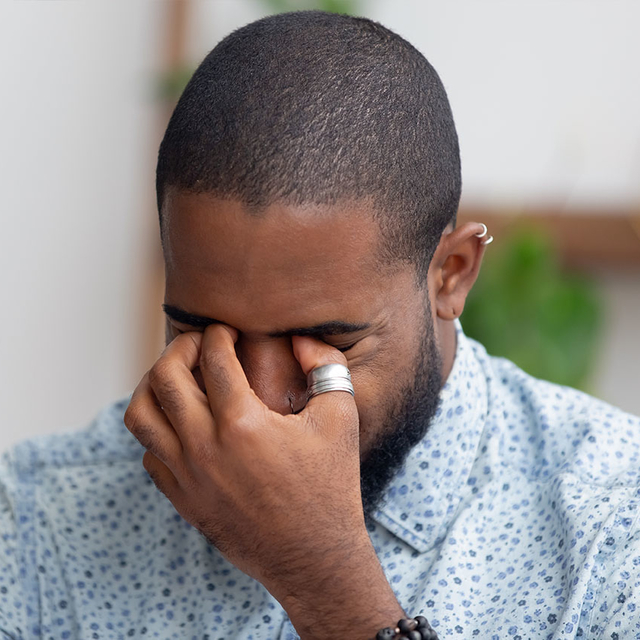 Tears are made up many substances secreted from various parts of the lacrimal system. The conditions collectively referred to as "dry eye" can occur for many reasons, the most obvious reason being insufficient quantity of tears. An aqueous deficiency refers specifically to inadequate production by the lacrimal glands of the watery part of the tears.
Tears are made up many substances secreted from various parts of the lacrimal system. The conditions collectively referred to as "dry eye" can occur for many reasons, the most obvious reason being insufficient quantity of tears. An aqueous deficiency refers specifically to inadequate production by the lacrimal glands of the watery part of the tears.
Aqueous deficiency is what really properly ought to be called "dry eye" - when you're aqueous deficient, you really are dry. This is contrasted with meibomian gland dysfunction, where the primary problem is - or at least starts out as - poor production or secretion of the oil layer. However, the lines become blurred as the diseases progress.
Aqueous deficiency is most frequently associated with auto-immune diseases (most notably Sjögrens Syndrome). Other well known causes are LASIK or other laser eye surgeries, where patients experience primary aqueous deficiency at least temporarily, and some permanently, due to severing of the nerves; and side effects of many medical treatments such a radiation or chemotherapy which may cause permanent damage to the lacrimal glands.
Artificial Tears
There are many artificial tears available over the counter. Feel free to bring them to your eye exam and speak to your optometrist about your options.
Typcially, if you are using artificial tears more often than every 2-3 hours, you should consider alternative lubricants and look into eyewear and other strategies for managing pain and discomfort.
Many patients with moderate to severe dry eye symptoms from other causes (including a destabilized tear film, meibomian gland dysfunction etc.) end up using artificial tears more as a means of controlling pain than as a protectant against imminent damage. Your natural tears have substances intended to protect and nourish the eye surfaces. When your natural tear film is destabilized, overloading it constantly with watery or oily supplements can further destabilize it by basically washing the good stuff right out.
Gels & Ointments
Gels are best for night-time use. They are thicker than artificial tears - though "liquid gels" may be somewhere in between - and theoretically last longer on the eye. For those whose dryness puts them in danger of corneal erosions at night, eye protection is critical and many doctors recommend gels for that protection. Putting a gel in both eyes and covering the eyes with an eye guard or plastic may be a useful way to keep the eyes lubricated at night. There are some concerns about build-up from gels, so speak to your eye doctor before using them.
If your eyes dry out while you sleep, your optometrist may recommend the use of a thicker lubricant, such as an ointment, at night.
Preserved Lubricants
Don't use a product with benzalkonium chloride (BAK) unless specifically directed by your doctor - and even then, please ask him/her about alternatives. Do follow your doctor's instructions. If you've been told to avoid all preservatives, for example for a period following an eye surgery, do so. Your doctor may also have particular views on which preservatives are safer than others.
Topical Steriods
It is not uncommon for patients with moderate to severe symptoms to be given a short course of steroids before moving on to other treatments. Additionally, some doctors are using topical steroids in conjunction with Restasis (Restasis is currently the only prescription eye drop that helps your eyes increase their own tear production with continued use.). Steroid eyedrops must be used cautiously, with regular monitoring of the intraocular pressure by the optometrists, because of the risk of elevated intraocular pressure.
